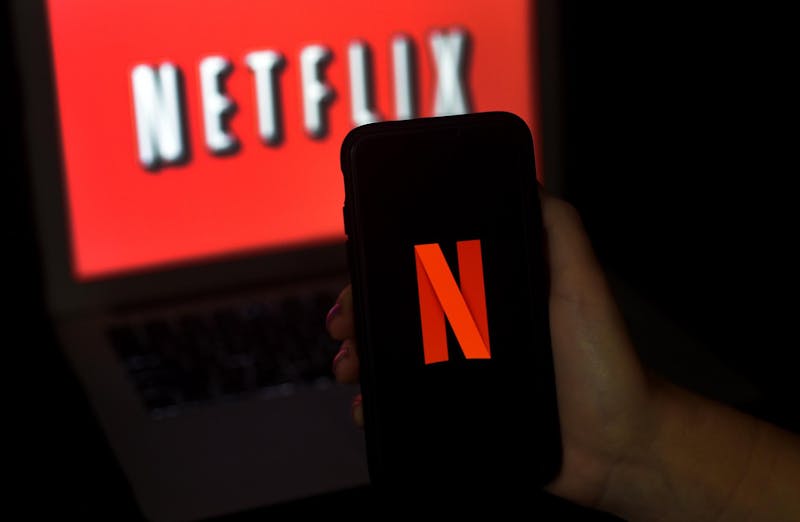Editor’s note: All opinions, columns and letters reflect the views of the individual writer and not necessarily those of the IDS or its staffers.
Picture this: You just got home after an exhausting day of classes, bundled up in winter gear and trudging through snowy sidewalks. You’re mentally juggling dinner plans, unfinished assignments and the looming 8 a.m. class tomorrow. But as soon as you open the door, all those plans go out the window — you need to unwind.
You settle in to watch Netflix, maybe “American Manhunt: O.J. Simpson: Season 1,” hoping for a mix of distraction and intrigue. Within minutes, you’re hooked — until an obnoxiously loud, irrelevant advertisement shatters the mood.
Sound familiar? Ads are permeating streaming platforms, disrupting the once-ad-free sanctuaries we relied on for an escape. What’s worse, switching services feels futile — every platform’s doing it. There’s no escaping this new reality.
But this got me thinking streaming services aren’t just adding ads. They’re expanding into new content genres, gamification features and untapped markets in a relentless battle for subscriptions. The streaming wars are reshaping how we consume entertainment, with profound implications for consumer behavior, advertising and the future of digital media.
Here’s what I found:
According to a digitaltrends article updated this January, the three most popular streaming services (based on subscriber count) are Netflix at 282.7 million, Amazon Prime Video with more than 200 million and Disney+ at 153.6 million members.
A Marketing Dive article said Netflix executives are prioritizing new in-house ad tech in 2025. This is a result of the company surpassing its ad revenue targets for the end-year period, Gregory Peters, co-CEO of Netflix, said in the article.
In its Q4 report, Netflix said it got 19 million new subscribers during the quarter. The article attributes live sports content, such as the Mike Tyson versus Jake Paul boxing match in November 2024 and NFL games on Christmas, as enticing content encouraging new memberships.
Mike Seiman, CEO and founder of Digital Remedy, said in the article the emphasis on live sports programming is a valuable opportunity to interact with specific audiences and will help position Netflix in the digital ad space in 2025.
Amazon Prime Video is also making a similar executive strategy. In 2024, Prime started displaying ads for all users. According to a Hollywood Reporter article published last October, the company made over $1.8 billion in upfront commitments last year and is bound to grow this year.
An Amazon spokesperson said in the article that Prime plans to evaluate advertising volume to satisfy customers while keeping up with the competition. The article said the ability of “Thursday Night Football” to garner a crowd — 15 million viewers per game — and how Amazon now has over 50 new brands for “Thursday Night Football” sponsors including Verizon, Subway and State Farm.
But on top of that, Prime Video is poised to add NBA content and interactive ads to connect users to its retail space as well.
Disney+ is a similar ad-inclusive story: According to an Adweek article, the new terms rolled into place for new subscribers Jan 27. Existing subscribers will see the advertisements starting March 24.
Again, we’re seeing a push for live content, specifically ESPN+, which has over 30,000 annual live sports events including the MLB and WNBA. Since the programming is happening in real-time, Adweek said previously “ad-free” services will put breaks in content to match the show timing.
So, what does this all mean? What’s to become of our binge-watching and comfort shows?
Streaming wars aren’t slowing down anytime soon, and the future might get even more chaotic. Platforms will likely embrace interactive features — think gamified shows or choose-your-own-story formats — to keep us watching longer. Meanwhile, as ad fatigue and subscription overload set in, we might see smaller streaming services pop up, catering to niche interests and promising less interruption for those willing to pay extra. On the flip side, some platforms might double down on entertainment with shopping, like Amazon Prime Video’s plans to link ads directly to its retail empire. It all points to a future where streaming isn’t just about watching — it’s about keeping you engaged at all costs.
It’s safe to say that streaming wars will continue. For ordinary users, this shift feels eerily like cable TV with extra steps: ads interrupting critical moments, too many options evoking decision paralysis or excessive subscriptions and dissatisfaction in paying more for less noise. As we go back to doomscrolling and living between the ad breaks, it’s clear: regardless of the updates, all platforms win to a certain degree. Consumers are losing autonomy in their content experience while streaming services and their sponsors continue to create new brand associations and revenue streams through ad campaigns and gamification.
Netflix is about to introduce another Golden Age of Piracy.
Meghana Rachamadugu (she/her) is a senior studying marketing and business analytics and pursuing a minor in French.
